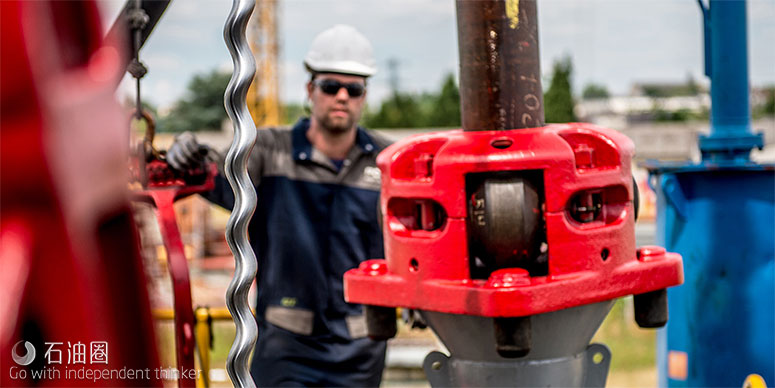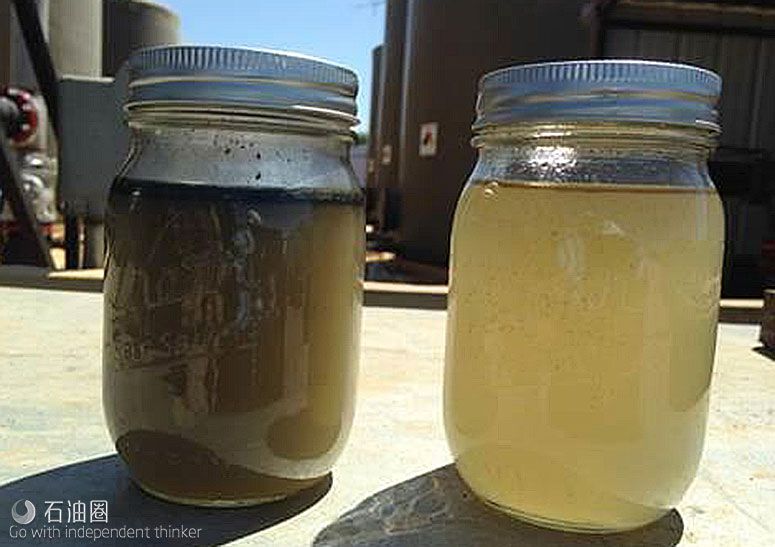The recent boom in the North American shale plays from hydraulic fracturing depends on pumping large volumes of sand and water into horizontally drilled wells. Operators have optimized fracturing techniques the last two years, lengthening well laterals and doubling the volume of sand used per foot. A typical fracture job uses from 1.5 million pounds to 6 million pounds of fracture sand. Daily sand production rates can range from 50 lb to 1,600 lb produced during flowback and early production, posing significant problems for production equipment downstream.
Sand accelerates wear on pumps, chokes and valves designed to handle fluids, leading to increased maintenance, early equipment replacement and increased downtime. High sand content also settles and accumulates in separation vessels and water storage tanks, requiring additional cleanouts.
Filters serve as a standard solution to these challenges, but they can create additional problems. Frequent filter change-outs incur significant labor and disposal costs. Systems such as the Tore Trap cyclonic desander from National Oilwell Varco (NOV) operates in solids management in oil and gas production. The Tore Trap can be installed without filters or combined with high-efficiency filters to meet demanding water quality specifications while minimizing the time and costs associated with frequent filter changes.
The equipment combines high-efficiency, solid-liquid hydrocyclones with the Tore solids fluidizer to enable removal of solids from water without disrupting flow. By reducing the concentration of solids in fluid upstream of a filter, the Tore Trap contributes to a significant reduction in the frequency of filter changes and improves the condition of filter elements. Operation at a consistent differential pressure enables better protection of downstream equipment and simplifies management of solids removal.
The ceramic cyclones within the Tore Trap cause the sand to disengage and deposit into an accumulation section. The sand-free fluids exit via the cyclone overflow and continue to the remainder of the process equipment. Once the sand has reached a high level within the accumulation section, the Tore solids transportation device activates to discharge the solids without disrupting flow through the ceramic cyclones. The Tore Trap has the ability to handle a high concentration of inlet solids of up to 1% by volume. The fluidizer can discharge the accumulated solids in 10 minutes or less with minimal operator involvement.
The same Tore fluidizing technology may be used for online vessel desanding. NOV has successfully applied this method to remove solids from the bottom of production separators, crude oil treaters, free water knockouts and tanks. The technology fluidizes solids without disturbing the separation process. Similar to the Tore Trap, this method also allows solids to be removed from critical production equipment without shutting down and eliminates carryover of solids to downstream equipment.
The following case studies examine how the technology has contributed to successful solids management, reducing filter changes and vessel cleanout removal and, in some cases, eliminating the need for filtering.
Produced water treatment
Alberta-based operator Enerplus Corp. experienced challenges with high sand content, which led to filter replacements every 45 minutes on one of its well sites. This operational inefficiency caused increased maintenance hours, wasting time and increasing costs. Enerplus worked with a team of sand management experts from NOV, conducting a four-month trial of the Water- Wolf Dynamic Oil Recovery system and the Tore Trap desanding skid. During this trial Enerplus found that the technology behind the desanding skid allowed the best addition to its production stream. The equipment created a dramatic reduction in sand content, decreasing the filter replacement rate from every 45 minutes to once a day. Enerplus continues to see positive results using the technology. The company used the equipment as a key component of its newest waterflood project, crediting the small footprint, service and technical expertise as an ideal production solution.
Saltwater disposal facility
At a centralized processing facility in Oklahoma, solids had accumulated in offload tanks, gun barrel separators and clean water tanks, requiring subsequent unplanned tank shutdowns to dig out solids. To alleviate these issues, the facility required a more efficient separation system. The facility installed a Tore Trap, which pumped fluids through the solid-liquid cyclones. The system helped reduce the solids entering the facility. The inlet fluid entered the Tore Trap and exited nearly free of solids. A significant mass of solids from the inlet had been clearly trapped in the system.
The laser particle size analysis also highlights the effectiveness of the unit. Samples from the water inlet indicated that particles ranged from 1 μ to 350 μ, with a mean of 12.3 μ. The water outlet sample indicated that most particles greater than 10 μ and many particles from 4 μ to 10 μ were removed. The mean particle size in the outlet sample was now 1.5 μ. The equipment effectively removed solids from the facility’s received fluids, aiding in the overall operability of the facility, minimizing fine solids carryover, downstream accumulation in tanks, and pump and well maintenance issues.
Water tank cleanout
In 2016 a Permian Basin operator observed a significant buildup of solids in water tanks at one facility. To assist in cleaning the tanks, the operator rented a Tore Trap and connected it to the bottom nozzle of a solids-filled tank. The pump circulated the solids-laden tank water through the cyclones. The operator directed discharge water from the equipment through a hose into the thief hatch of the tank and used the stream to stir the tank bottom. The tank-cleaning exercise helped the operator avoid calling an environmental cleaning company to remove the tank bottom with vacuum trucks and eliminated the need for a cleaning crew to enter the tanks, saving thousands of dollars.
Online sand removal from a separator
An operator experienced an ongoing problem of solids separation and accumulation in separators. The sand reduced the vessel’s fluid-holding capacity and minimized the fluid retention time, resulting in poor gas, oil and water separation. The sand impacted the vessel’s level instrumentation and carried over into downstream equipment. Dump valves on the separator experienced severe erosion, requiring regular replacement. NOV installed the ToreOVD system to remove the sand online, as it accumulated without affecting the separation process. The system enabled daily sand removal, allowing the separator to now effectively separate gas, oil and water as designed. The equipment also eliminated problems with level instrumentation and erosion of the control valves.
Conclusion
As hydraulic fracturing and sand volumes increase, operators will need more effective sand removal solutions to conquer sand production challenges. Removing sand from a process fluid stream prevents the sand from causing erosion of downstream equipment and accumulating in separators, heater treaters and tanks. The Tore Trap allows online sand separation and transfer of the captured sand while remaining online. By removing sand from oil and gas production, the system minimizes overall maintenance, labor and operating expenses.

 石油圈
石油圈

